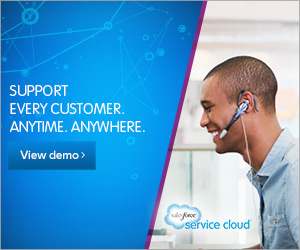Computers are an essential part of life today, in both our personal and business lives. Nicholas Negroponte, founder and Chairman Emeritus of MIT’s Media Lab, summed it up nicely when he said, – Computing is not about computers any more. It is about living. I know I’d be lost without my electronic gadgets. The same is true for my business.
When I first decided to create a profitable webinar course, I knew I had several options; but whether the course was a one-hour webinar or a series of sessions, I had to place emphasis on developing income. Did I want to charge attendees to participate in the live webinar event, or charge them for access to the digital or transcribed versions of the web conference?
There were a lot of times during my first webinar, both in the planning and even a couple of times during the event itself, in which I almost caved into the thought that I couldn’t go through with hosting. I was a bundle of nerves! Fortunately I got through it, and hopefully sharing the things I learned will help you create a successful, profitable webinar course for your own business.
1. Identify the needs of your target audience. The best way to know what your audience needs is to ask them. One method for asking them is to conduct a survey. Sometimes offering anonymity will result in more honest answers. Several websites offer the opportunity to conduct these kinds of questionnaires. If you already send a regular newsletter via email or blog subscriptions, that’s a great way to introduce the survey. And if you don’t, this is the perfect opportunity to begin. Once you know their needs, use a service like www.webconferenceclassroom.com to find a software program that helps meet those needs.
2. Emphasize benefits from the very start. The invitation you send out to potential attendees should detail what they’ll be learning and other things they can expect, such as polls, homework, and follow-up surveys. Some small business owners offer extra literature or slight discounts in an online store. Any benefit that gives them an edge over those who do not register will encourage them to participate in your webinar course.
3. Know about how long your webinar course will last. Running a live webinar means broadcasting your voice and computer screen to an audience, whether the event is live or recorded and launched according to a specific schedule. Will a single webinar event that lasts an hour or two suffice for the information for your course, or will you need to schedule multiple sessions? When scheduling multiple sessions, how long will the term last? Even if you haven’t nailed down specific dates, knowing how many sessions and at what intervals they are broadcast will give attendees an idea of an end date. Some of the programs reviewed at www.webconferenceclassroom.com allow recorded webinars to replay at a later time for attendees who missed the event.
4. Develop a rough outline of your webinar course. Once you know what you will teach, create a rough outline. Break it into sections according to how many sessions you plan for the course to last. Next, refine the information so that you know exactly what you want to include in each session during the course.
5. Do your research, and then research some more. Even if you think you know all there is to know about your topic, research it anyway. Research not only lets you know what similar webinar courses offer, but it also tells you what they aren’t offering. When you present new information, it gives you the opportunity to draw attention to your course from a wider audience. This also includes researching reviews online to see which software program best suits the purpose of your webinar for profit course.
6. Select details carefully. It’s very easy to squeeze too much information in a single session. This is where practice comes in handy. If you are too vague and leave your audience guessing, then you risk losing them. Be detailed, but you can always use giving more information as an opportunity to assign homework at the end of each session.
7. That’s right, give homework. Homework should provide some kind of goal for the students, like improving their knowledge about the course information and preparing them for the next session. Confucius said, – Study without thought is vain; thought without study is dangerous. Homework also presents an opportunity for collaboration between attendees, and for discussion or Q&A sessions during the next session. Some of webinar software reviewed at www.webconferenceclassroom.com offers special features to enhance this aspect of the course.
Everyone has something that they can market. Taking that marketable item and turning it into a profitable webinar course sometimes seems easier said than done. The important thing to remember is that if you make a mistake, don’t give up. Evangelical author John C. Maxwell is known for saying, – A man must be big enough to admit his mistakes, smart enough to profit from them, and strong enough to correct them. This is also true for hosts of profitable webinar courses. If you find that something isn’t working, use the information in participant feedback surveys to make adjustments for the purpose of improving future webinar programs.
About the Author: A resident of Woodcroft, a Blacktown suburb outside Sydney, Australia, William Barcelon is the brainchild behind the webinar software review site called Web Conference Classroom. He developed the site to make it easier for business owners to choose the best means to communicate with their staff through the use of web conferencing. With family stretched from nearby their own home to halfway around the world in Canada and the United States, Barcelon and his wife Flo use the best video conferencing providers on the Internet to keep abreast of the latest family happenings.














